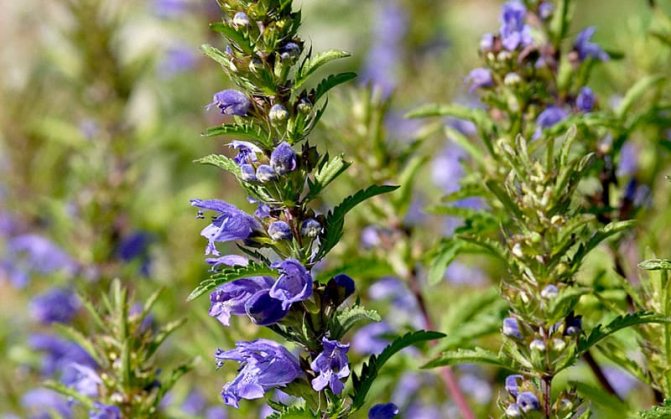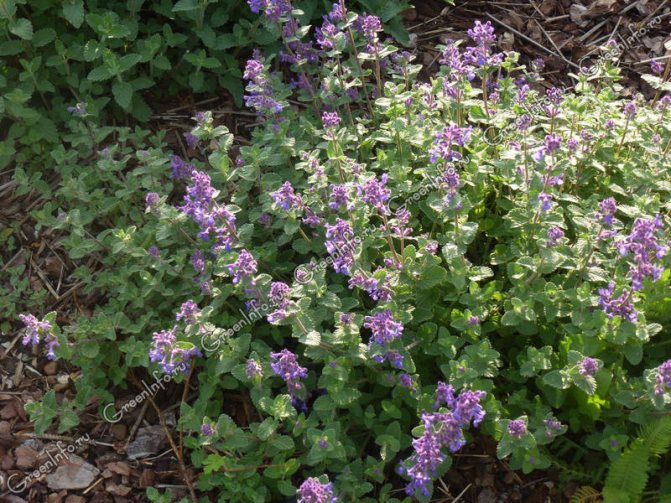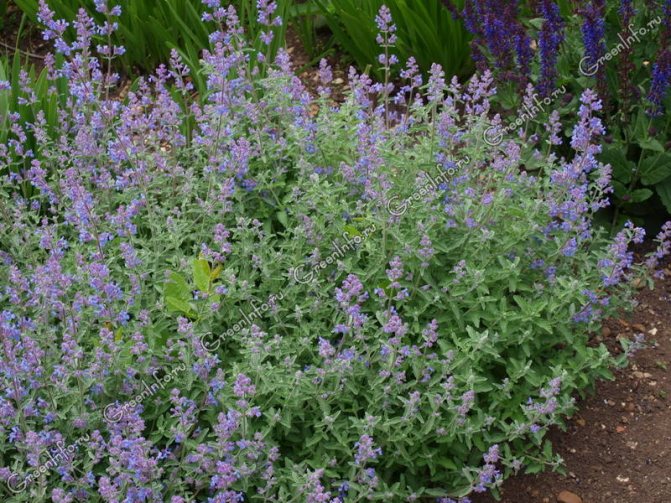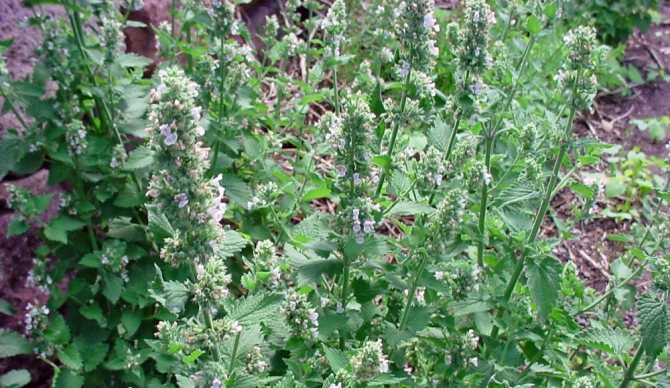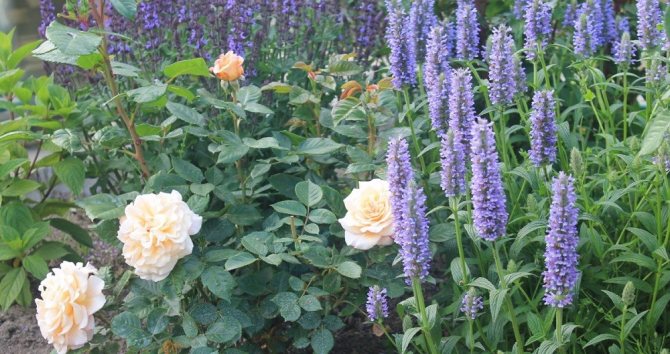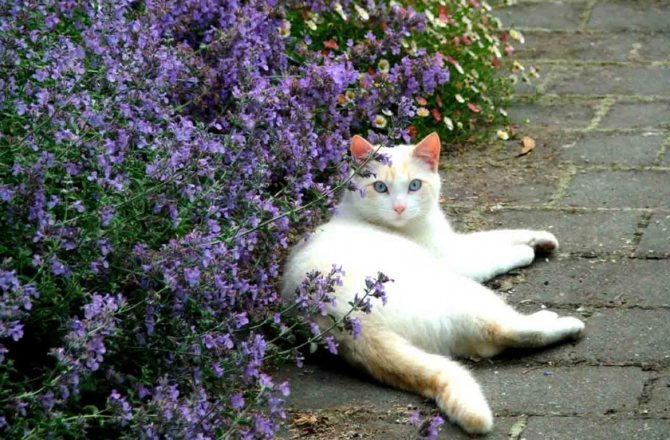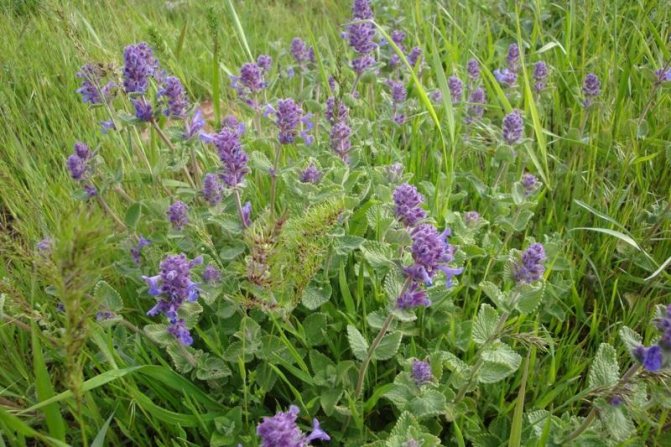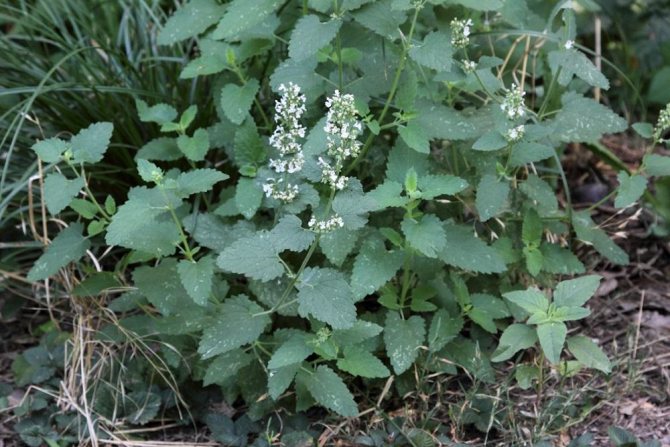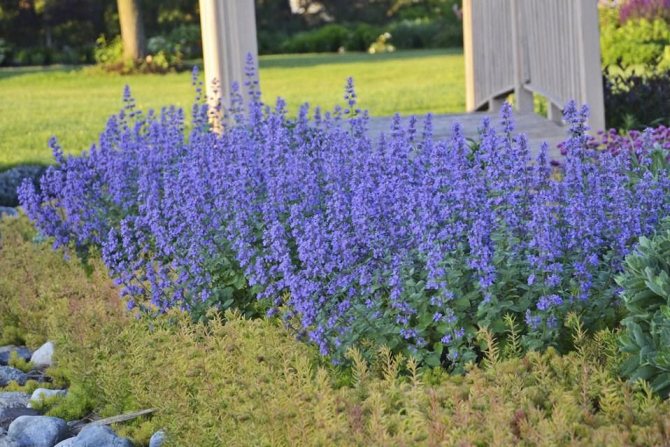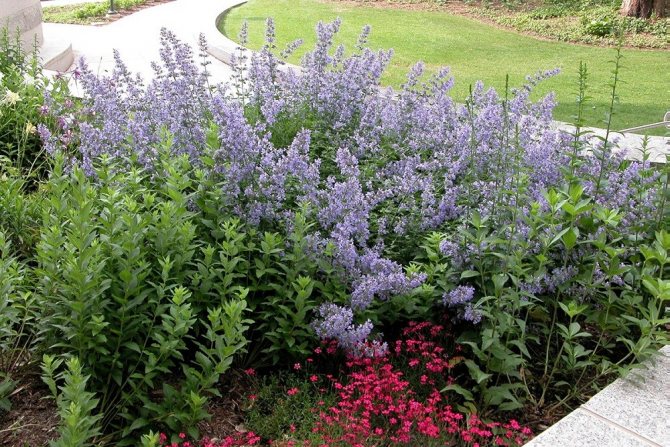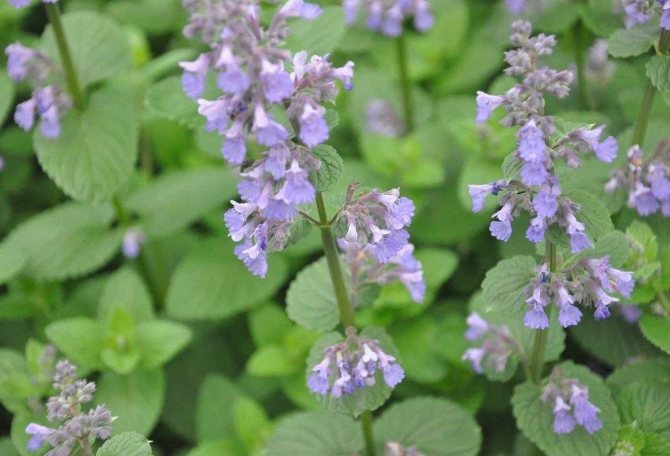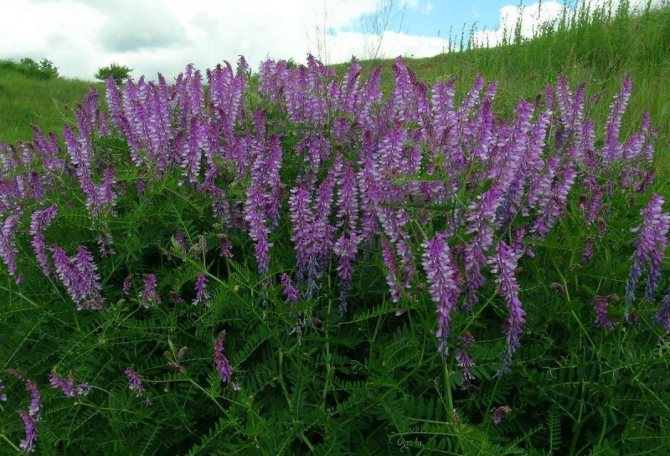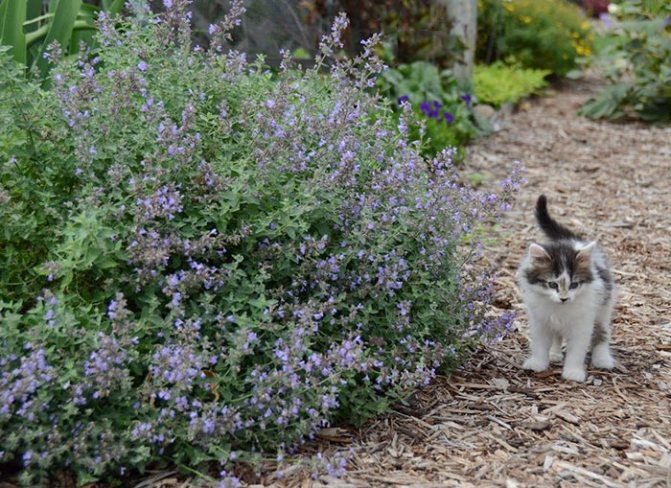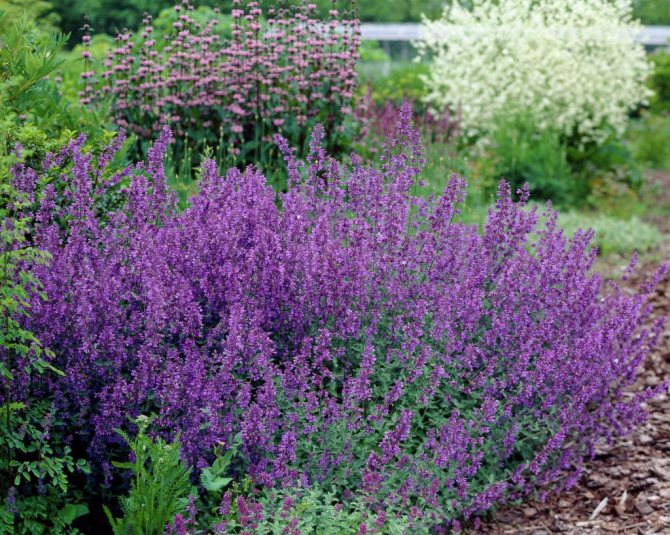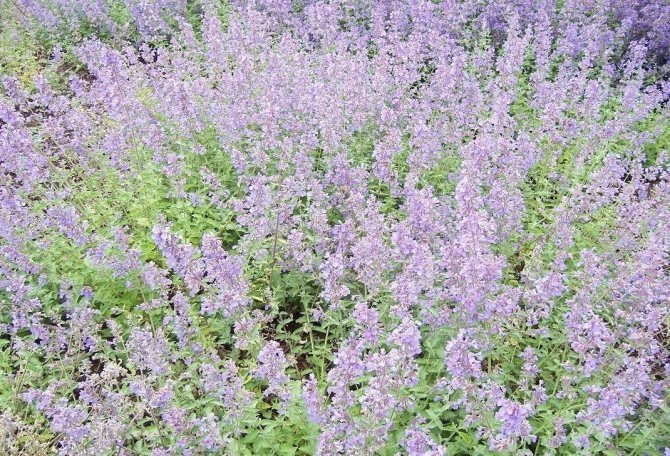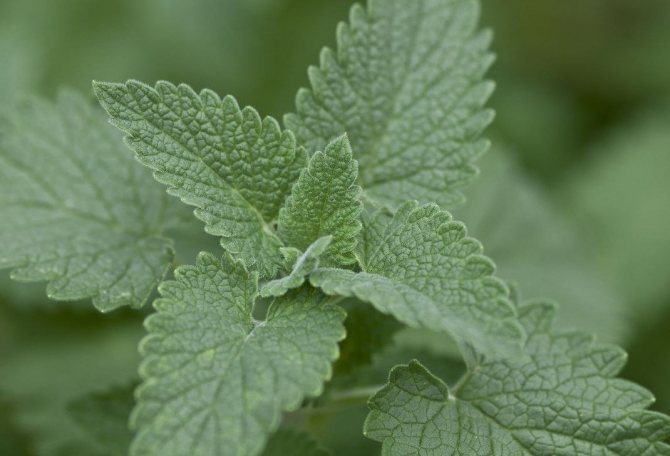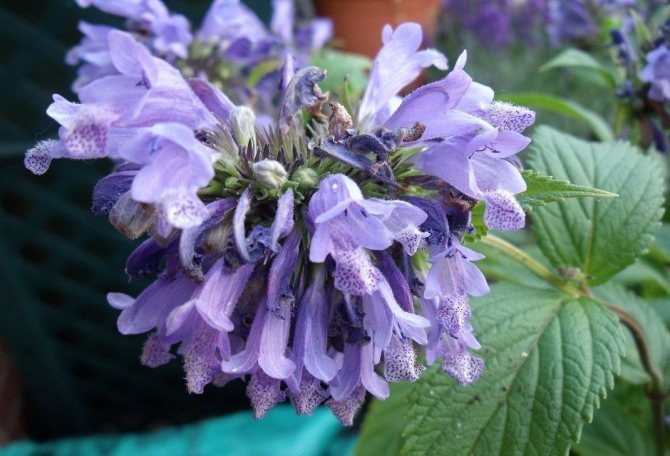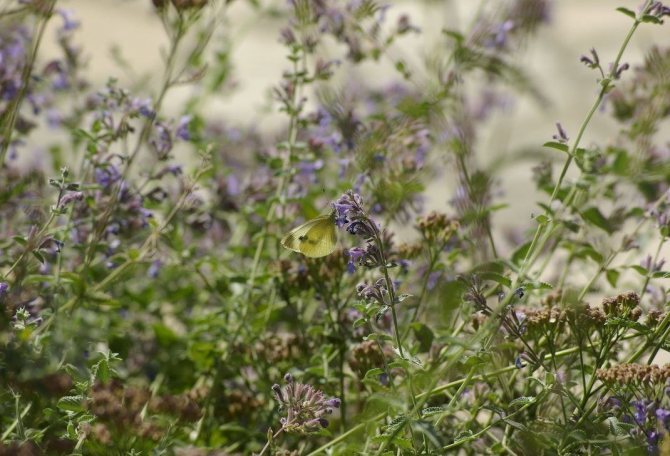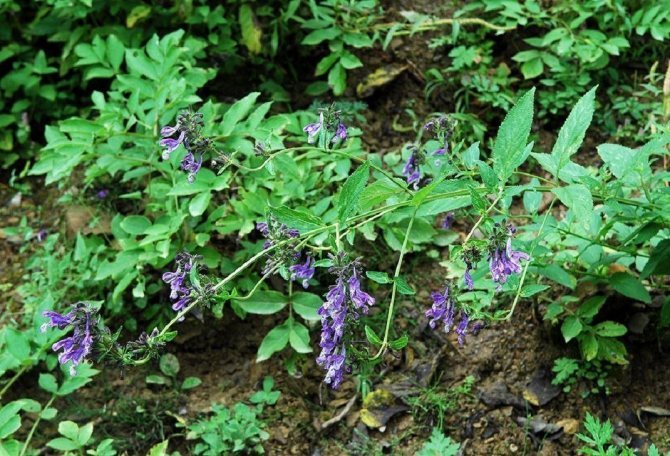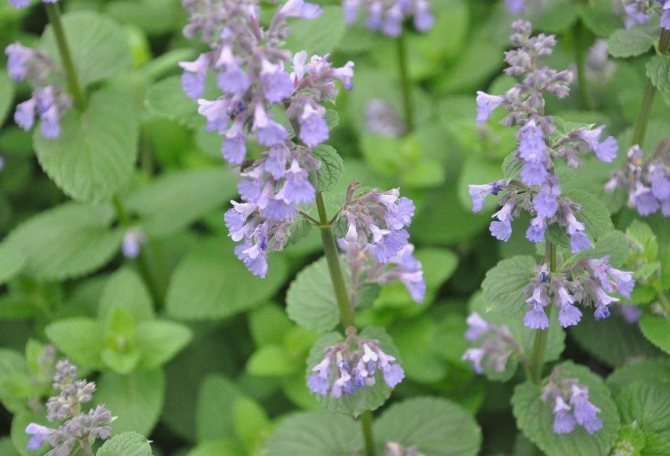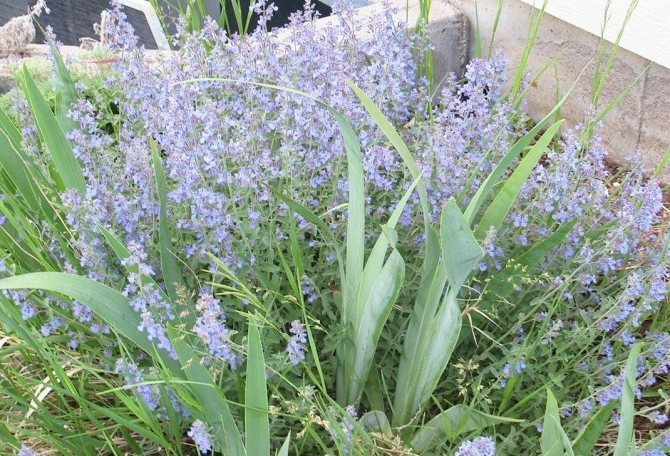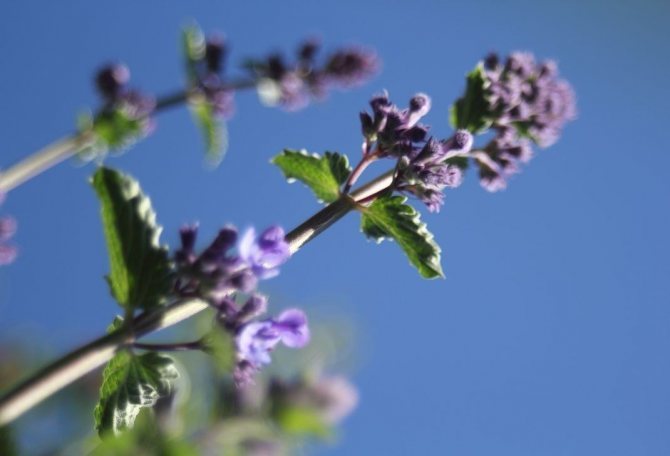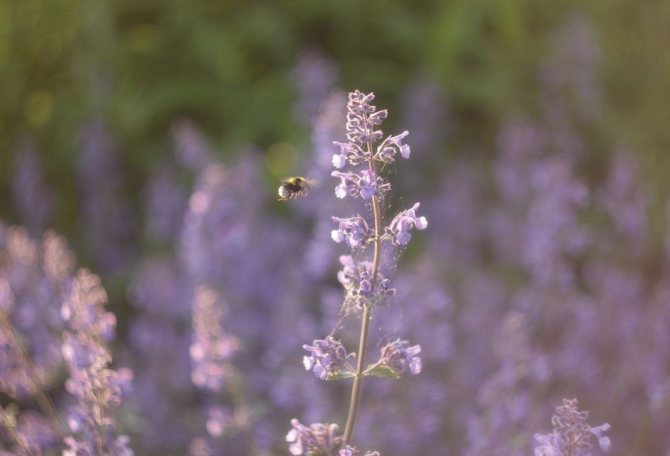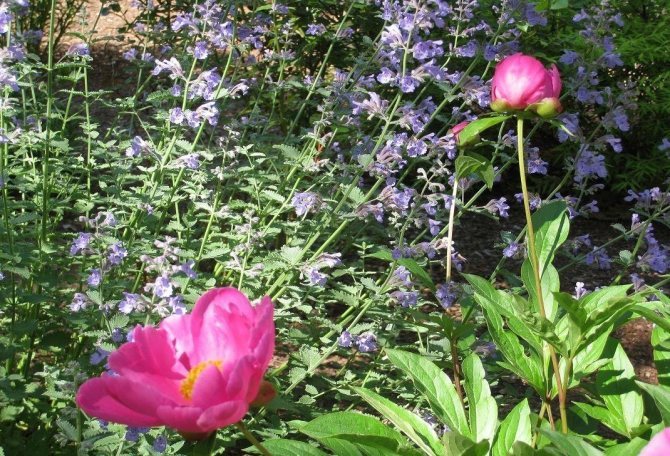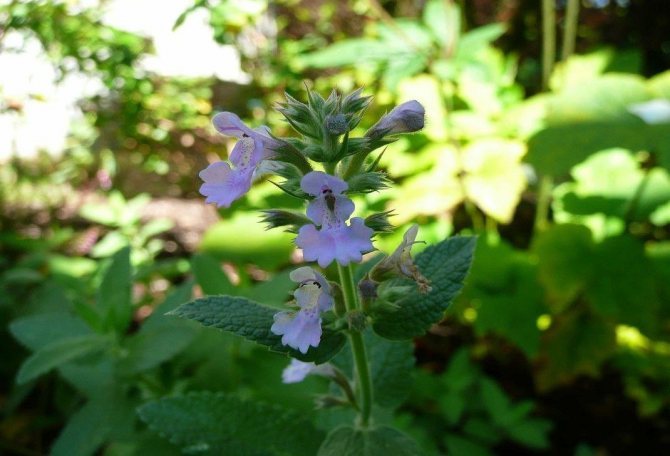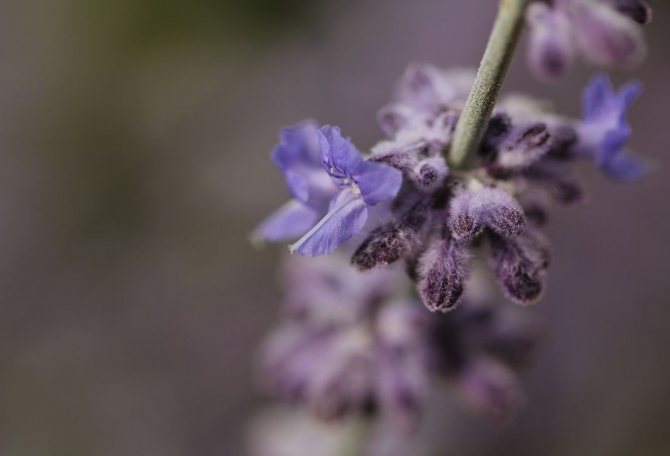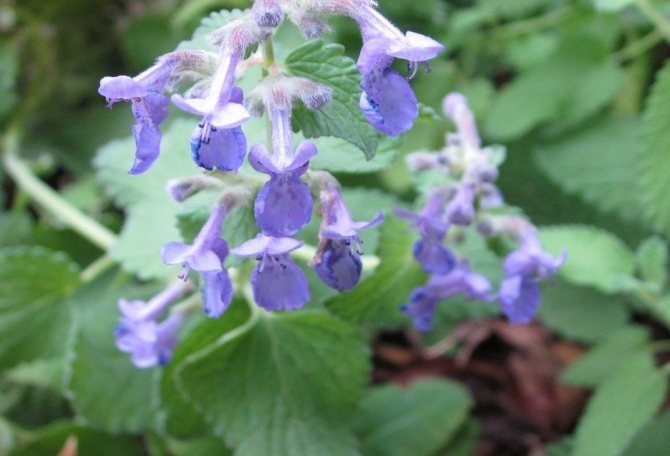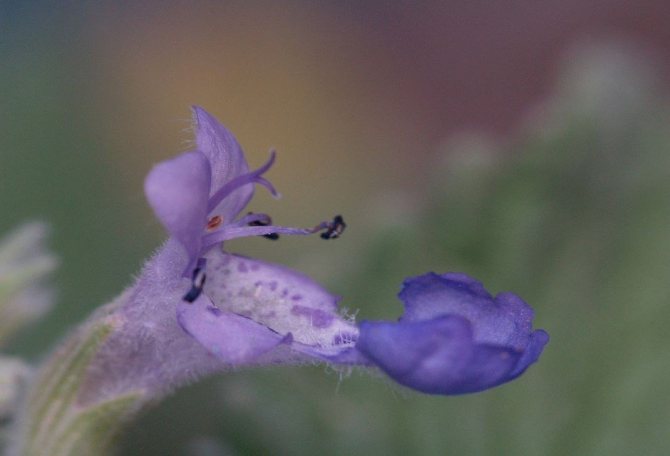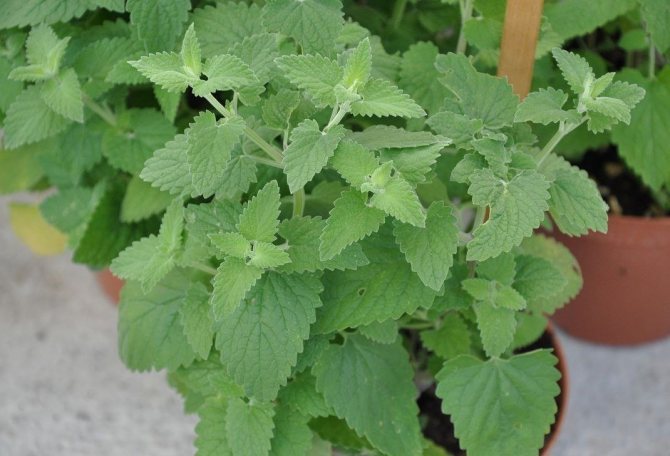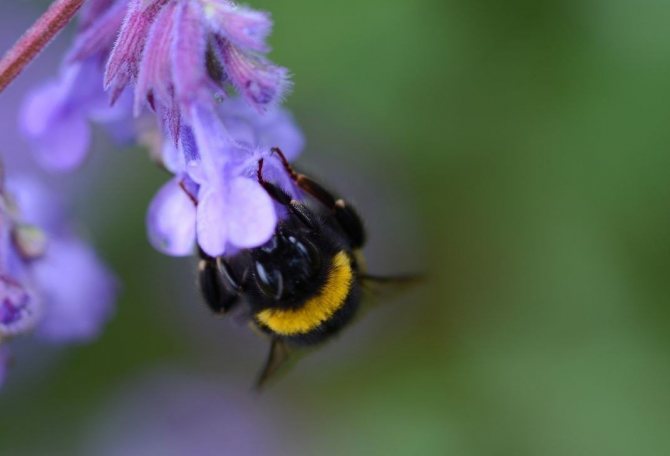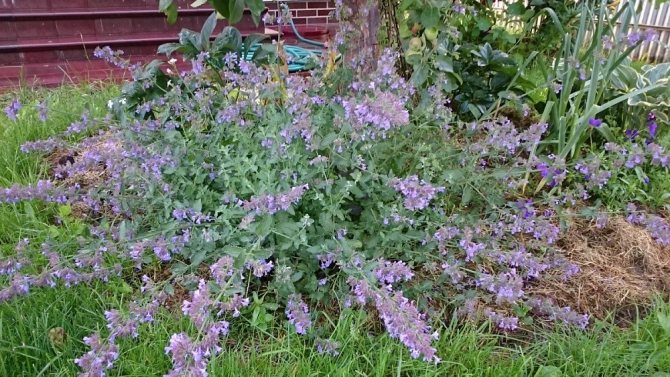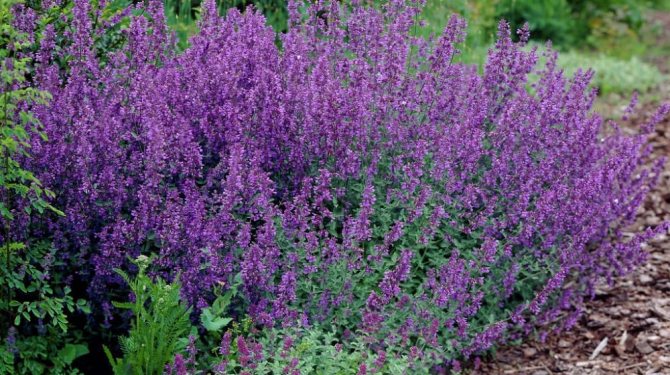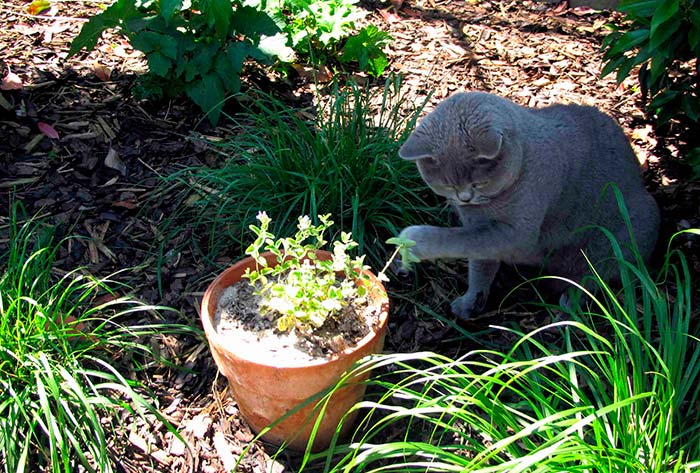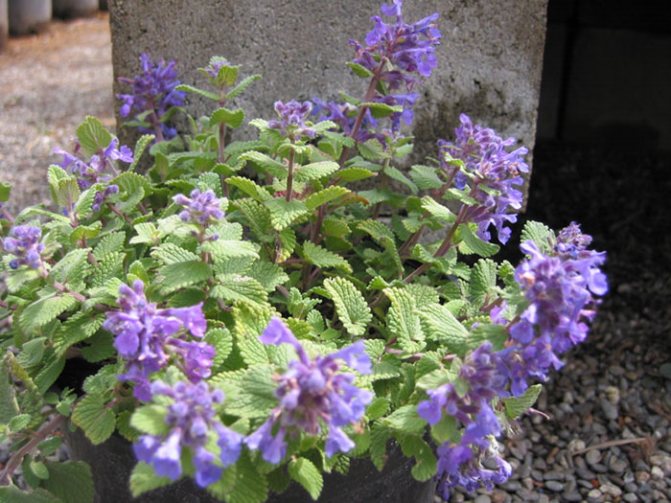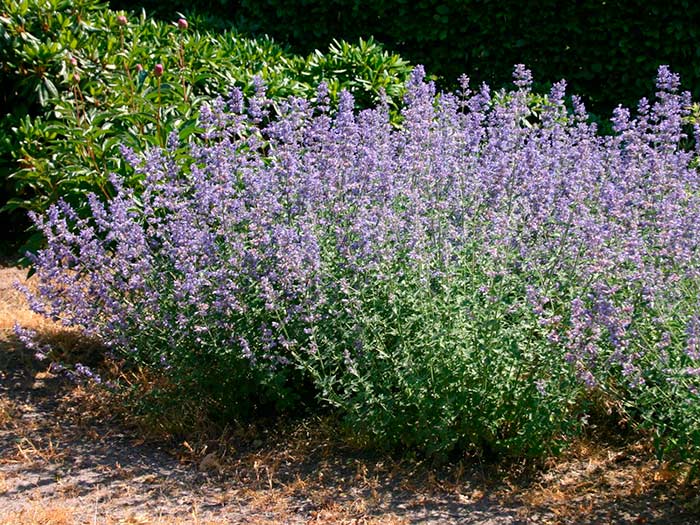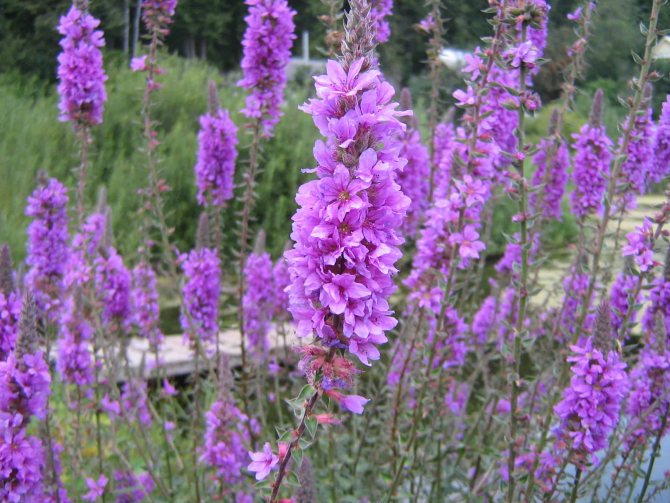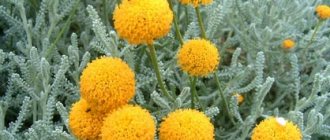This plant-perennial, which belongs to the Lipo family. The catnip has several more popular names: catnip, nepeta, field balm, sore grass, matoshnik - as soon as this plant is not called in various regions.
The places where this plant feels most comfortable have always been well-lit meadows and mountain slopes. Almost ubiquitous in the Northern Hemisphere. From a wild-growing species, matoshnik has long become a real boon for landscape designers. And took its rightful place among the plants adorning personal plots.
Popular types in landscape design
In gardening the following types of catnip are most common:
- Fassen's Catman - compact and unpretentious perennial plant, reaching a height of 20-60 cm. Flowering period: from July to the first frost.
- Catman Mussini - a low-growing plant up to 20 cm high. These are lush bushes with green-gray oval leaves and blue-lavender flowers. The flowering period is the same as that of Fassen's catnip.
- Catnip Catnip (feline, lemon). The stems of the plant can be up to 1 meter. The catnip has a pleasant lemon scent and acts like a valerian on cats.
- Siberian catnip - one of the tallest varieties of catnip. The stems grow up to 100 cm in height, the leaves are oblong-lanceolate.
Photo.
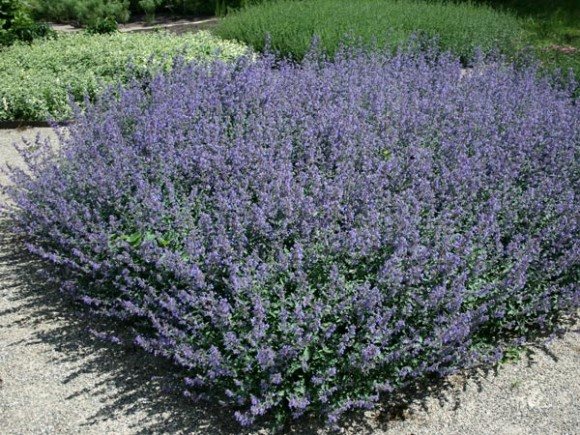
Photo of Mussini's catnip.
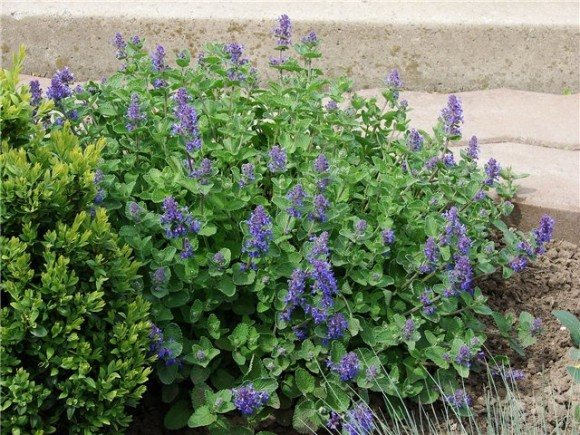

Photo.
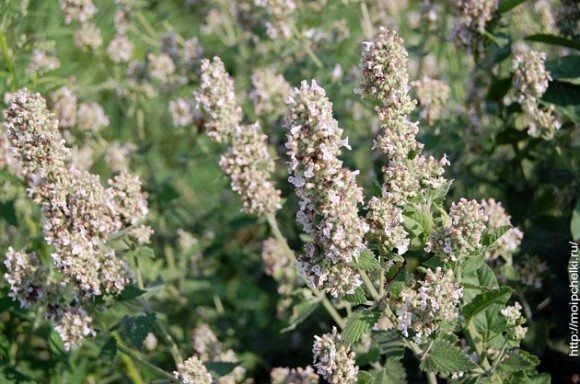

Photo of the Siberian catnip.
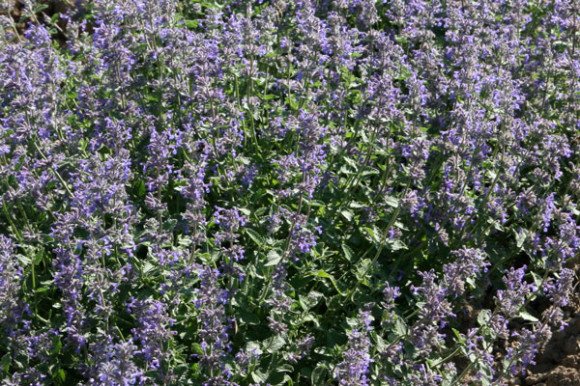

These are the main types of catnip that are often used in landscape design. But in order for the plant to look good in the composition, you need to correctly choose not only the type of catnip, but also know its varieties.
Decorative mulch. You will read about this in our next article. And this article tells about gabions.
Botanical description
Catnip has a highly branched, lignified rhizome. A high stem with lateral processes is located above the ground. Shoots are erect or lodging in shape. The bush can grow up to 25-100 cm in height. Dense pubescence is present on the stem and petioles. Oval leaves are opposite. They are oval or heart-shaped with a serrated edge.
In mid-June, spike-shaped inflorescences bloom at the ends of the shoots. Asymmetrical buds are colored lilac, purple or white. There are purple and violet dots on the pharynx and lip. After pollination of flowers, fruits ripen - seed pods. Each contains rounded nuts with a smooth brown surface. If, after flowering, the catnip is mowed, then by the end of August the second wave of flowering will come.
During the growing season and flowering, various essential oils are synthesized in the plant, so at different times the smell of catnip is different. In the spring it smells like geraniums or roses, and later a pronounced lemon scent appears.
Fassen's Catman. Planting and leaving
Nepeta faassenii (Fassen's catnip) is one of the most common types of catnipwhich is known for its aromatic and long-lasting flowering. In appearance, it looks like a lavender bush with purple-blue flowers.
This type of catnip appeared due to the crossing of the catnip Neptella and Mussini. The plant reaches a height of up to 60 cm, leaves are grayish-green in color, inflorescences can be lavender, blue, lilac shades, sometimes light shades are found.
Gardeners often combine it with roses and bulbous plants (tulips, peonies, daffodils).
You can plant and grow this perennial plant almost anywhere in the garden, it is unpretentious. But, if you want it to delight with lush flowering every year, need to know about some rules:
- Choose a sunny location and calcareous soil for planting.
- Provide the plant with a thick layer of drainage from large fragments, the catnip does not like stagnant moisture.
- After flowering, the shoots of the plant are cut by about half. This will ensure abundant flowering in the future.
- Catnip propagates by dividing bushes, seeds or cuttings. Seeds are sown in April in containers or in May in open ground. Cutting and division are carried out in the spring.
Popular types of Fassena
Among all varieties of Fassen catnip in Russia three:
- "Six Hills Giant" grows up to 60 cm, has rich blue inflorescences, blooms from May to September. It is often planted with ornamental onions or primroses, with the help of abundant flowering, it will hide the wilted foliage of these plants. It is also often planted with roses.
- "Blue Wonder" - plants up to 20 cm high with bright blue dense inflorescences, blooms from June to September. The main advantage of this variety, with which it conquers all gardeners, is a bright azure shade. If low bushes are planted closely along paths or alleys, you can achieve a "blue river" effect. The catnip grows quickly and does not require careful maintenance.
- “Walker’s Low” is a catnip variety, its stems reach a height of 60 cm, inflorescences are lavender, blooms twice a year: in May and September. In landscape design, they are used in alpine slides and flower beds. It can be planted almost anywhere.
Fassen's catman is ornamental plant, which, unlike other varieties, does not have medicinal properties.
Growing
Soil preparation for planting catnip
It is best to do this in the fall.
- Choose a well-lit area with loose, fertile soils.
- It is fertilized with high quality organic matter. Ammonium nitrate, superphosphates, potassium sulfate are added.
- After the snow melts and the earth warms up, the soil is loosened and seedlings are planted.
In southern latitudes with a mild climate, catnip can be sown in the ground before winter or early spring.
Care
Catnip doesn't need much grooming.
It grows beautifully, forming a uniform carpet, almost constantly blooming in various shades of blue and lilac.
Matoshnik gained its popularity among flower growers not only due to its decorative effect. Its ruggedness and resistance to drafts and drought makes it an excellent backdrop for many flowering plants.
The only drawback of the plant is its active growth, therefore you have to make sure that it does not grow beyond the boundaries allotted for it.
Drought tolerant, but tolerates excessive moisture poorly... This can lead to root rot, which will compromise the integrity of the planting. For re-flowering, the plant must be completely cut off. Then the second wave of flowering will occur in late August and early September.
In regions with abundant snow cover, catnip does not need additional shelter. There will be enough snow to keep the planting going. But in areas with frosty, but little snowy winters, it is better to cover it with agrofibre or other available material.
Regular fertilizing with mineral supplements is not necessary for the mattressif it grows in fertile soil.
Catnip does not suffer from pests and diseases of plants.
The only danger could be powdery mildew, but even then only on wet soils.And, of course, catnip thickets are a favorite place for cicadas.
When preparing a catnip for medicinal purposes, it is undesirable to use chemicals.
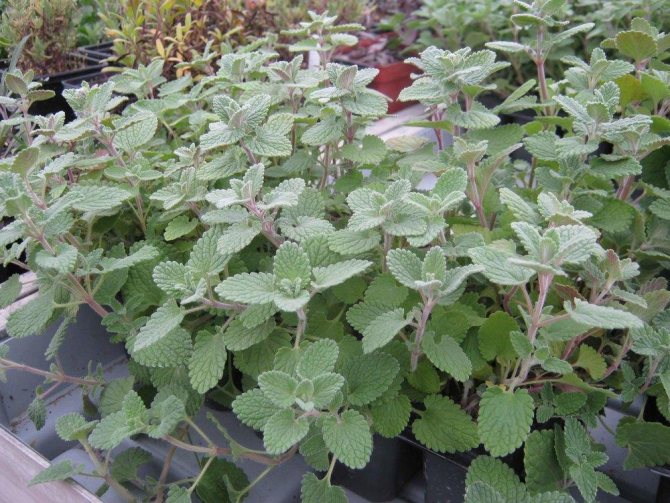

Blue carpet
Catnip The blue carpet creates a romantic atmosphere in the garden. His choose to create flower beds, rockeries, curbs, it can be grown in garden containers and pots.
This plant has a pleasant and rich aroma, combining notes of lemon, rose, geranium, lavender and lemon.
It is customary to grow blue carpet seedling, only in the southern strip it can be planted immediately in open ground. In order for the plant to grow safely and bloom profusely, a sunny place is chosen for it. Watering is moderate, if desired, you can use mineral fertilizers.
Catnip Blue carpet tolerates winter well, you do not need to cover it. The only exception is if the plant is sick and enters the winter period weakened. In this case, the soil is mulched and covered until winter.
Decorative wattle fence. An article and a photo about it here. And here is an article about decorative wood chips.
And in this section there is a lot of interesting information about the landscape.
Reproduction methods
Reproduction of catnip is possible by seed and vegetative methods. Due to the low germination rate, seeds are best sown on seedlings. At the end of March, sandy-peat soil is prepared in greenhouses or boxes. For sowing, grooves are made 1 cm deep at a distance of 5-8 cm from each other. The first shoots appear 6-7 days after planting, but not uniformly. Until 4-5 true leaves grow, the seedlings develop very slowly. Then the seedlings should be cut into separate peat or plastic pots. By the fiftieth day, the height of the seedlings reaches 10 cm, which means that the seedlings are ready for transplanting into open ground. It is necessary to maintain a distance of 60-70 cm between the rows, and 20-40 cm between the bushes.
Large plants can be divided during the spring. To do this, they are completely dug out and the rhizome is carefully freed from the earthen coma. The roots are divided by hand, each division should contain several points of growth. The seedlings are immediately planted in a new location. Before planting, the soil is well dug up and fertilized.
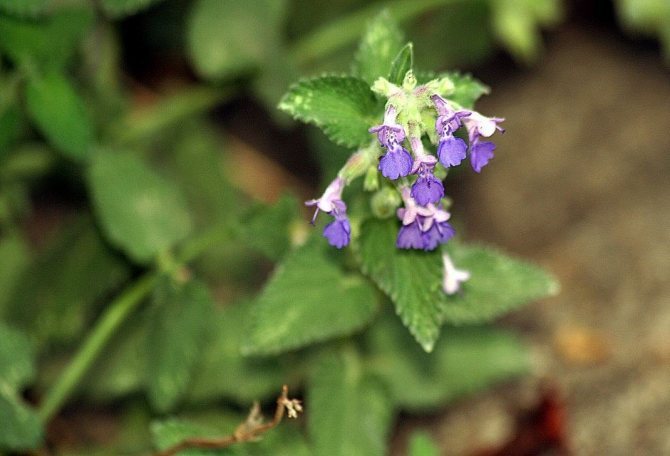

Catman Mussini
This type of catnip reaches a height of 40 cm... The leaves of Mussini's catnip are grayish-green or green, small, oblong. In nature, it grows in the Caucasus on gravelly and stony slopes, distributed from the lower to the subalpine belt.
The plant is unpretentious, but demanding on soil moisture and bright light... Does not tolerate shade and high levels of humidity. Often used in large rock gardens.
Catnip - unpretentious, but bright and graceful plant, which is often used in landscape design. Depending on the variety of catnip, it is planted in rock gardens, on curbs and flower beds, and sometimes with its help, the garden plot is decorated with "blue rivers". It is quite easy to grow a catnip, the main thing is to take into account all the rules before planting.
To the top
How to properly care for a plant
Like other flowers, catnip needs regular maintenance.
Irrigation
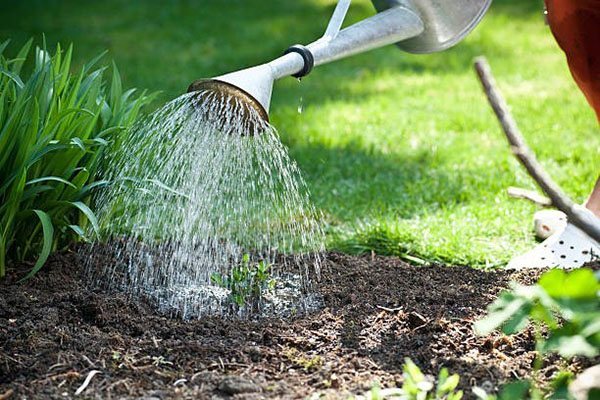

The plant perfectly tolerates sudden changes in temperature and drought. But with a lack of moisture, the bush is able to slow down in growth, while not losing its attractive appearance. It is recommended to water the catnip with small amounts of water, but systematically.
If there is no rain on the street for a long time, then irrigate at least once every 7 days.
Fertilizer
Preparations should be started in early spring. It is best to purchase mineral mixtures with a high nitrogen content. In autumn, organic matter should be introduced into the soil. The best option is mullein infusion or chicken droppings.
Loosening the soil


To keep the catnip green and lush, you should systematically remove all weeds and loosen the soil.Also, do not forget about soil mulching. This is best done with peat or humus.
Plant pruning
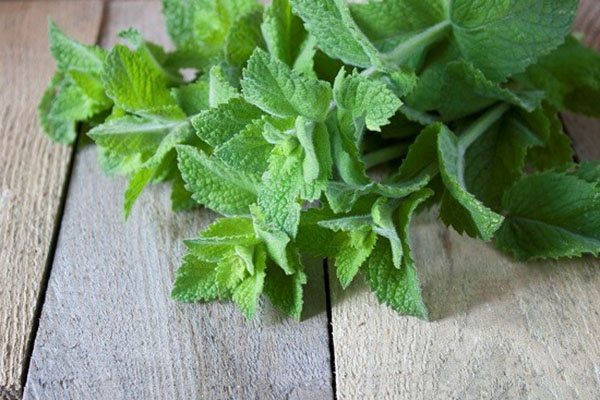

This procedure is carried out in the middle of summer. Initially, you need to remove all wilted inflorescences. This will help the plant to form new buds.
As for the removal of the stems, they are cut at a height of up to 15 cm. Thus, the catnip will delight with its flowering even in September.
The cut green part is dried and then used in medicine and cooking. Shoots and flowers should be dried only in a dark and well-ventilated place. It is not worth keeping the plant in the sun, as it will lose its beneficial properties. The prepared seasoning is kept in glass containers or in cloth bags.
Why cats love the smell of this plant
What does mint look like - varieties and names
It is scientifically proven that the scent of lemon has a magnetic effect on the cat. The essential components of the plant, when they enter the nasal sinuses of a cat, give a lightning signal to the hypothalamus of the brain and form a wide variety of animal behavior.
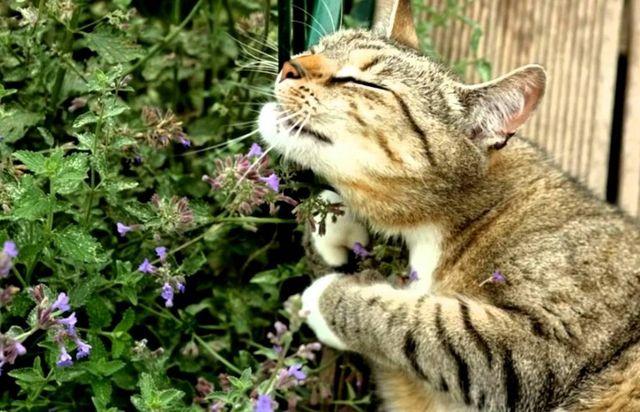

The magic of affecting the pet
The principle of influence on the cat
The smell of catnip leads to a real euphoric reaction. The pet starts spinning and rolling on the floor, accompanying everything with the strongest purr. When this smell is exposed to the brain, the animal very often has hallucinations. Veterinarians compare this reaction to drunkenness. There are a lot of all kinds of individual reactions:
- loud rumbling;
- too active washing;
- unnatural jumping;
- climbing curtains;
- sleep in an unnatural position.
In most cases, the hyperactive behavior continues for 10-12 minutes. After that, the cat usually falls asleep.
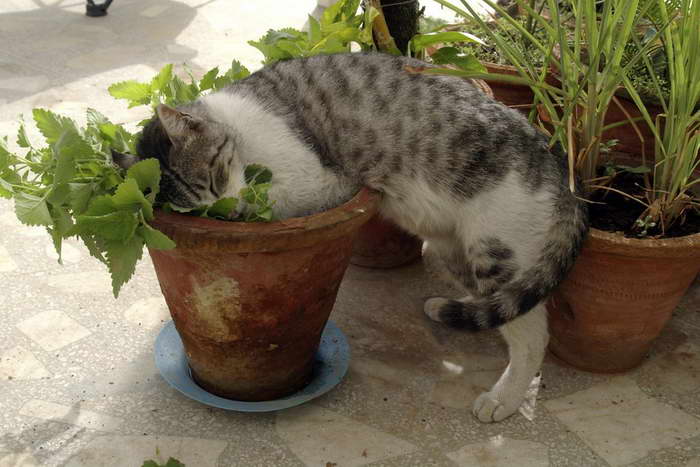

A cat's reaction to a favorite treat
The break in the euphoric reaction can last from 30 to 60 minutes and with repeated inhalation, all symptoms will recur.
Is catnip harmful to cats when you don't need to use it?
Even the huge interest of the pet in the catnip does not allow him to eat more than the required amount. The animal has an internal barrier that does not allow eating "euphoric weed" continuously.
On a note! Even if this suddenly happened, then cleansing the body after an overabundance of catnip occurs naturally: through diarrhea or vomiting. This situation does not require the involvement of a veterinarian and the use of any medications.
The only restriction on the use of catnip concerns pregnant members of the species. Females can become overexcited and the wobbly nervous system will react negatively to stress.
It is important to remember that cats have a natural habit of feeling which plants they need and which ones they don't. Therefore, it makes no sense to restrict the animal in outdoor conditions.
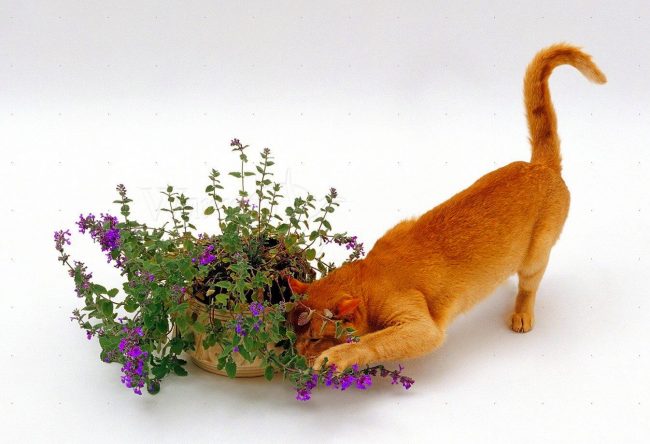

Lemongrass
Content:
- What does catnip look like?
- Landing
- Care
- Collection and procurement
- Application
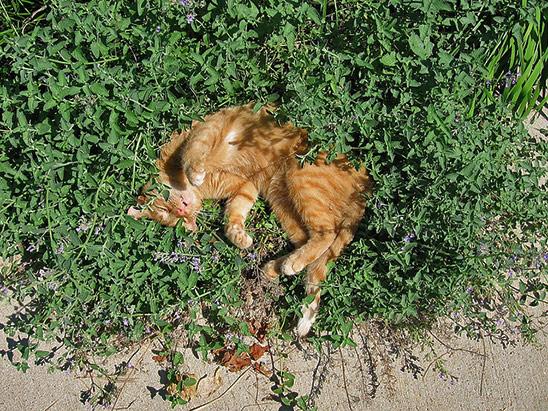

The spicy and edible plant has a light lemon scent, which is why it is also called lemon catnip. You can find several more names - fragrant shandra, cat grass, matoshnik, field balm, etc.
Growing catnip in your garden is a double pleasure. Firstly, a beautiful flower in a flowerbed, and secondly, a healthy herb. Of course, if you do not have cats that can simply wallow on it, and at the same time trample on neighboring flowers. But I can reassure you, only a third of cats fall for catnip.


